QuestionI am not sure there are horse Chiro's in this area (Jackson MS) but I will check around. I have the vet coming out in the next day or so to float her teeth, so I will have him check her over as well.
This summer she has lost a good bit of weight and is thinner than she has ever been. She has not seen her in action though. The vet said her weight loss could be due to now being ridden every day combined with needing her teeth floated. We have changed her to a higher protein and fat food and she gets all the grass hay she wants and although she has put on a small amount of weight she is still very thin. Hopefully the floating will help that. She also had a very serious abscessed foot two years ago and was out of commission for nearly a year. This past winter she founder on the opposite foot and the farrier says it could have been due to her injury to the opposite foot causing her to put so much constant weight on the other foot for so long that it caused it to founder (she was not able to put any weight on the abscessed foot for a couple months and favored it for months after). She now has a wedge on the foundered foot, and actually, since then, has greatly improved on her front leads. Of course she still cross fires. I will have her checked out by the vet, see if I can find a chiropractor, and of course put some weight on her. I will stop cantering her until everything else is in order. Does the saddle pad make that much of a difference? I saw a VERY EXPENSIVE saddle pad ($260) called the SaddleRight orthopedic pad. I don't know if it is worth spending that much on a saddle pad or not, but I don't want her to be in pain if that would help.
-------------------------
Followup To
Question -
I read your profile and think you may be the best qualified to give me advice on this problem. I have a 7 year old mare who although is very ridable has had little formal training. I have spent a lot of hours in the round pen with her, but much less "in-th-saddle" training. She picks up her correct leads in the round pen with no rider and in full tack, but when she has a rider she often picks up the wrong lead and when she does have the correct lead she cross fires. She may start out correctly then falls into the cross fire, I'll drop her down and start over she will go several strides then cross fire again, or sometimes she will go in and out of unison. She is being ridden by a young man just starting his "training" business, but he seems stumped on what to do to try to correct this problem. My mare is a very smart horse and has a history of doing things to get out of working properly, but I can usually tell when she playing her tricks, and I feel like she is having a genuine "problem" maintaining her balance with a rider even when she has a good "balanced" rider on her. I rode her tonight and her disunited canter has got to be very uncomfortable for her (it certainly is for me!) No one I have talked to seems to know what to tell me other than the usual drop her down to a trot, ask her again etc. That has not worked and we have been working her daily for over a month, and while she now almost always initially picks up the correct front lead the hind lead continues to be a problem. Do you have any suggestions, comments, anything that may help?
Answer -
Hi Lisa;
What's she's doing is called cross canter Here are a number of reasons for it:
1) Saddle doesn't fit creating pinching or pressure points.
2) The horse is not sufficiently strong enough to strike off on the outside hind.
3) The horse is not balanced enough to strike off correctly.
4) The rider is crooked, leaning, blocking or some other riding error that prevents the horse from striking off the outside hind.
5) The horse is crooked, bent improperly and therefore unable to strike off correctly.
6) The horse simply doesn't understand what's being asked.
7) The horse is physically incapable to striking off with the outside hind due to some physical ailment; misalignment, tight muscles etc...
Since she gets the correct leads in the round pen, I believe you can eliminate #6, but all the rest could be the issue.
I'm leaning most towards #1 & #7 as the most likely culprits.
I would start by having her examined by a chiropractor, followed by a massage therapist. And I would have a professional saddle fitter exam her saddle fit. Once you've eliminated any chance of a physical pain issue, then you can be sure it's a training/rider issue.
If it's a lack of strength and balance on her part, then you need to strengthen her and improve her balance through appropriate gymnastic exercises like you would any other horse. No more cantering until she willing gives it of her own accord. There's tons to be done at walk and trot to strengthen her, but I really think the biggest underlying problem is something physical that's causing pain and discomfort.
Best wishes!
Sincerely,
Lana Reinhardt
AnswerMy Lisa she's had some tough luck in the last few years. All of these things can certainly contribute to sore muscles, muscle atrophy and tight muscles in other places that limit range of motion on joints, lack of strength, crookedness etc...all of which can make it difficult for her to carry a rider and canter.
You might check for food allergies and ask the vet about probiotics all to help with her weight. And check for ulcers, which can cause weight loss.
I would not invest in the saddle pad. If the saddle doesn't fit, no saddle pad on the planet will make the saddle fit. Kind of like a shoe that does fit...doesn't matter which sock or how many socks you wear, the shoe still won't fit.
If by cross firing you mean she hits her front feet with her hind, this happens when a horse is on their forehand and not sitting on their haunches. It also happens if the front feet aren't balanced and therefore the breakover point of the foot is too far forward causing the front foot to get 'stuck' on the ground and not get off the ground and out of the way in time for the hind to come forward. The former is a training and riding issue, the latter is a farrier problem.
Much luck!
Lana

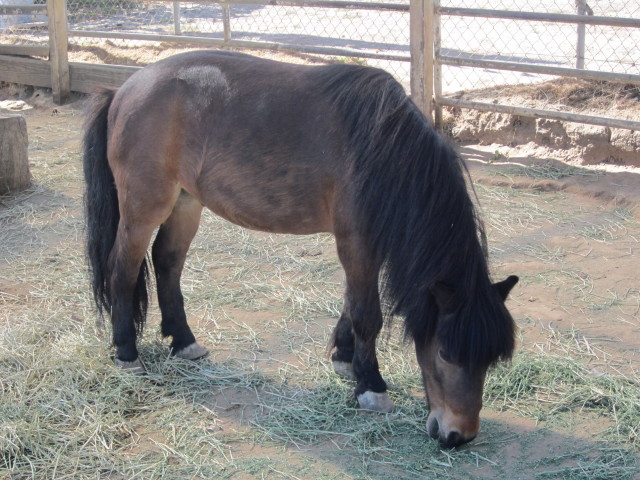 Question
QuestionSnipper
QUESTION: Hello!
I volunteer wit
Question
QuestionSnipper
QUESTION: Hello!
I volunteer wit
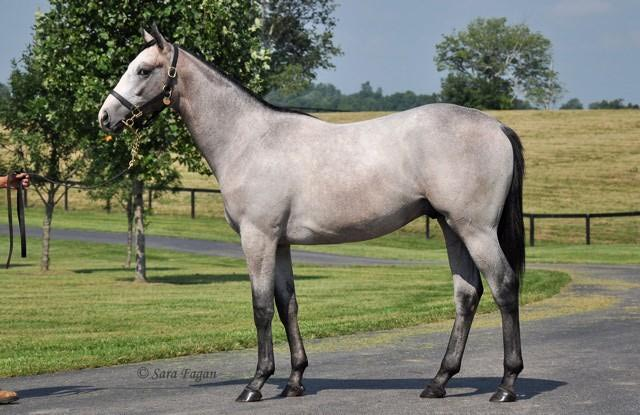 leg bandages on fore legs
Question
leg bandages
hello maam. this is an ima
leg bandages on fore legs
Question
leg bandages
hello maam. this is an ima
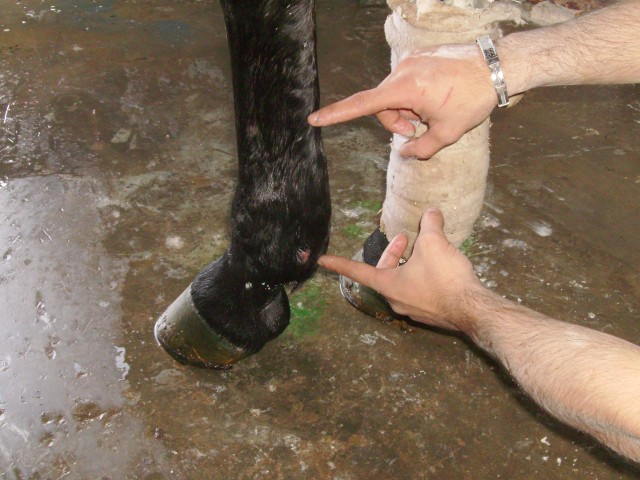 Horse swallen ankle problem
QuestionQUESTION: Hi.I am not much in to horses but a g
Horse swallen ankle problem
QuestionQUESTION: Hi.I am not much in to horses but a g
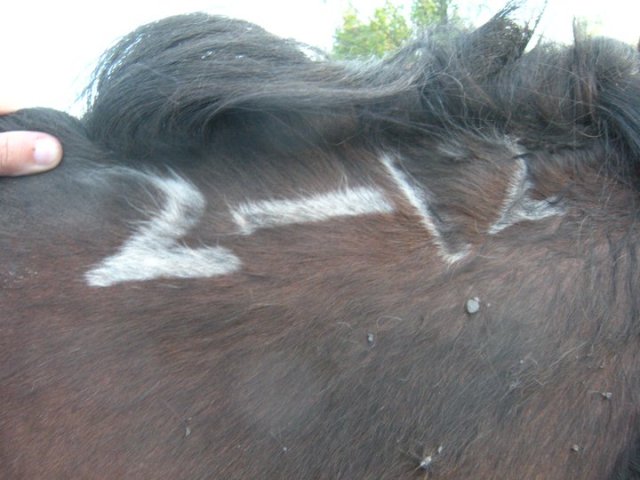 13(?) year old Standardbred mare
Question
Brand
A friend of mine just pulled a mare from
13(?) year old Standardbred mare
Question
Brand
A friend of mine just pulled a mare from
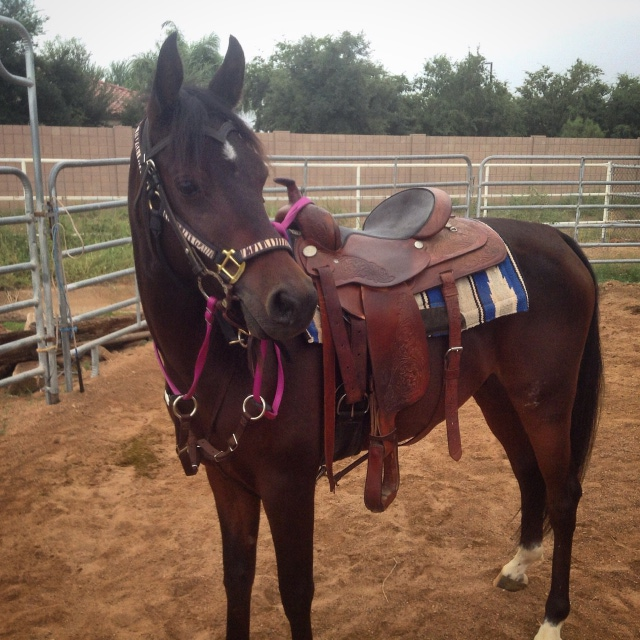 Im I too big for my horse
QuestionDiablo
QUESTION: I have been saddle brea
Im I too big for my horse
QuestionDiablo
QUESTION: I have been saddle brea